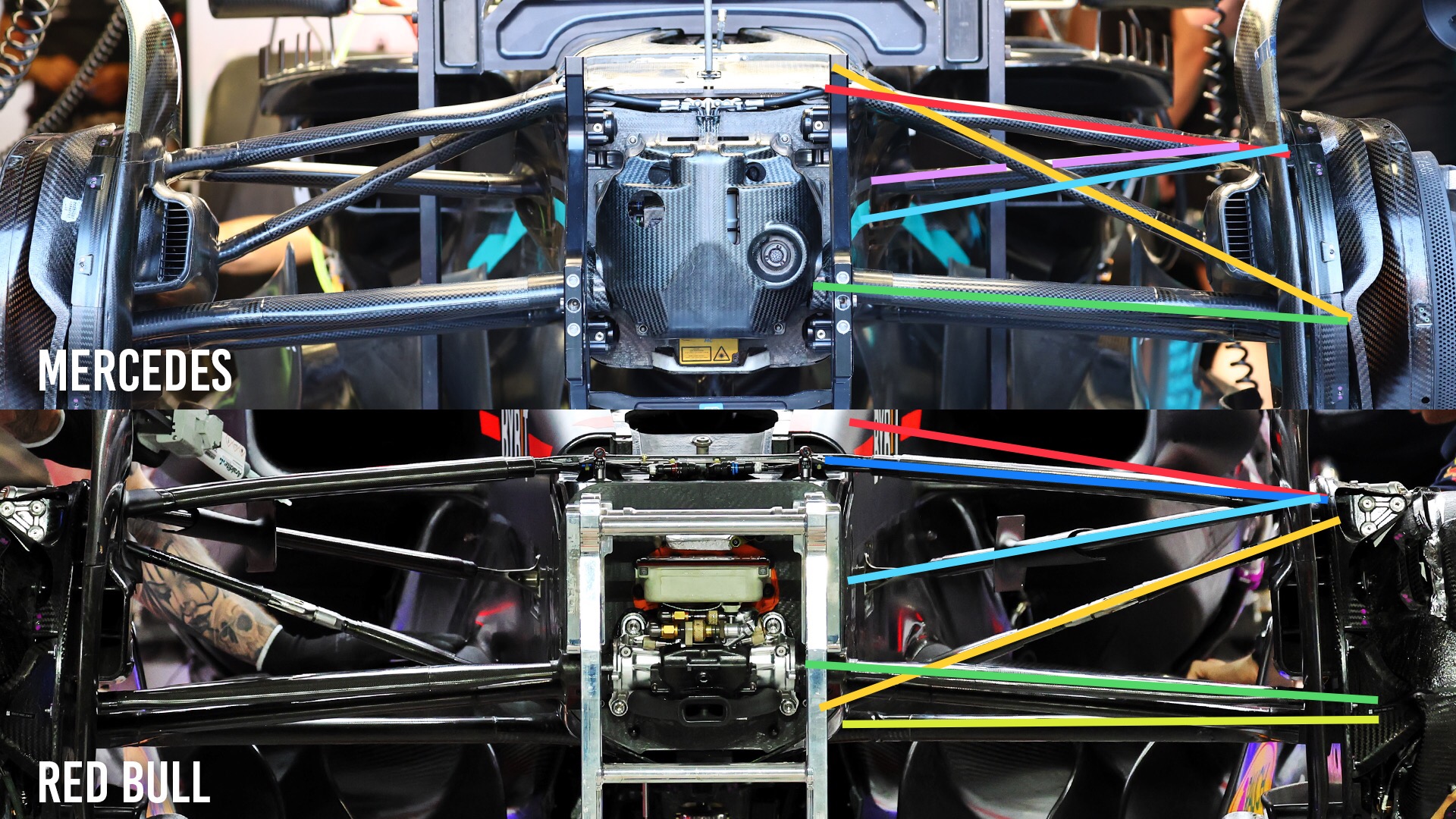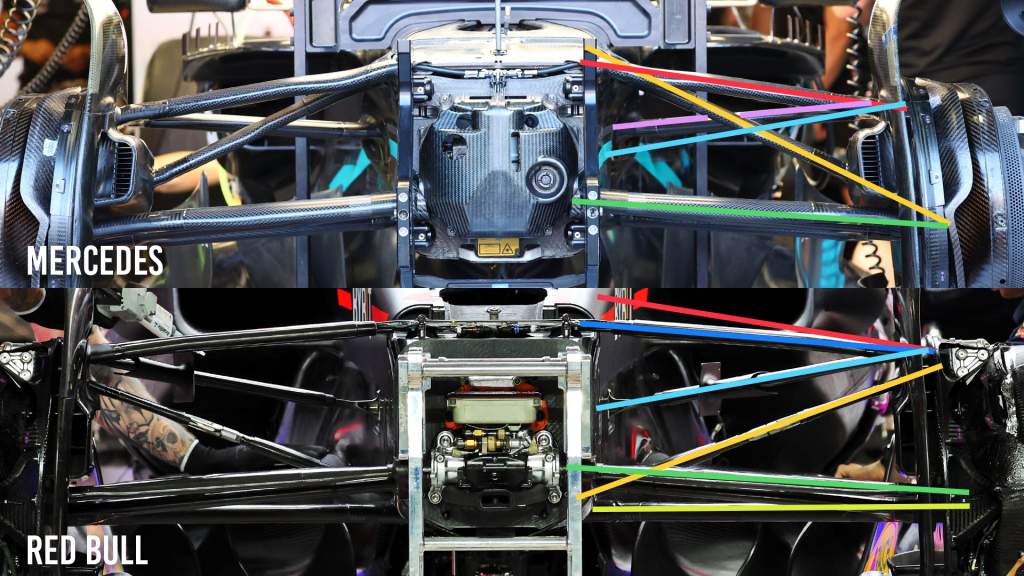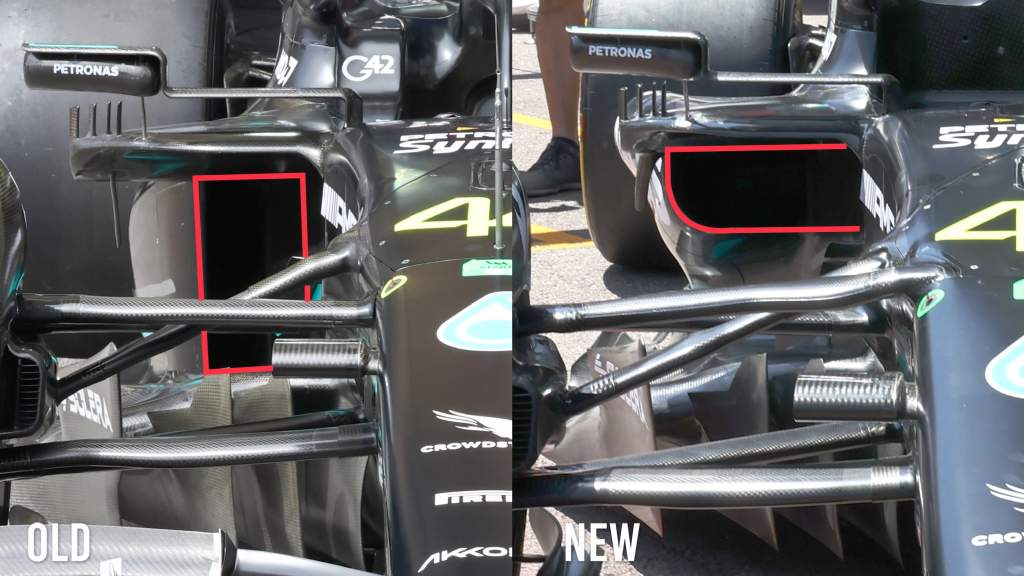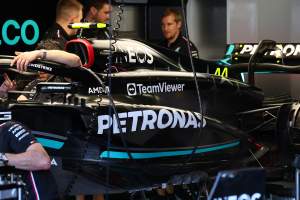Up Next

Mercedes has finally bitten the bullet and introduced a raft of development changes in the hope that it can change the fortunes of its 2023 Formula 1 season.
Personally I think it has taken a long time to realise that after seven (2014 to 2020) totally dominant season plus one (2021) very successful one, it simply got the new ground effect aerodynamic regulations wrong.
But from what I have seen I am not totally convinced that it really believes it actually got it wrong and that its main competitor Red Bull, Aston Martin and Ferrari got it right.
Some of Mercedes’ changes seem a bit half-hearted. That might be because of the components or chassis structure underneath the body surfaces which it can’t change easily in-season and or the limitations of the budget cap. Either way to me it looks a bit of a halfway house.
Monaco will be a very difficult circuit for optimising the number of changes it has introduced so I wouldn’t expect it to come to grips with its true potential this weekend. But as the season is slipping away it’s best to just get on with it, introduce the upgrades here and learn as much as possible.
So let’s go through the changes. As normal I will start at the front.
Suspension
The front suspension is the one part of this package that I think it has engineered exceptionally well.
It’s all well and good to have an underfloor producing lots of downforce but if it is you need to keep that huge surface under control to stabilise the potential centre of pressure shift. You either do that by running the car very stiff or by reacting to the changing longitudinal loads through the suspension linkage.
To achieve the latter Mercedes has adapted its chassis to increase the amount of anti-dive. The main change is that the inboard mounting for the forward leg of the top front wishbone has been moved up significantly. In that area of the chassis there will be a machined aluminium bulkhead to mount the rockers and ancillaries for the pushrod suspension system and with a bit of clever thinking Mercedes has been able to adapt this machining so it can mount this leg in that area.

As these comparison pictures show it’s not dissimilar to what Red Bull has run since these regulations came into play. Mercedes still uses a pushrod (yellow line) as it would be more or less impossible to change this without a completely new chassis.
The steering track rod and lower wishbone forward leg (green line) on both cars are very similar. However on the Red Bull the lower wishbone rear leg inboard mount (light green line) is lower. This will reduce the amount of anti-dive created by the angle of the inboard mounts on the top wishbone so the anti-dive characteristic of the overall front suspension is not as dramatic as it first appears.
As for the top wishbone, on the Red Bull the forward leg (blue line) and rear leg (light blue line) are highlighted as is the forward leg (red line) and rear leg (pink line) on the Mercedes.
To show the differences I have transposed the Mercedes front leg (red line) onto the Red Bull and the Red Bull rearward leg (light blue line) onto the Mercedes.

The forward leg on both the upper and lower wishbones more or less dictates the lateral suspension geometry. For Mercedes this will be a big change as this suspension linkage rearrangement will increase the height of the front roll centre which can lead to more understeer. It will also mean there will be reduced negative camber change with suspension movement. On these cars the front suspension movement is minimal but it does mean that statically Mercedes will have to run nearer to Pirelli’s maximum permitted negative camber.
Under braking and in slow corners this will reduce the front tyre contact patch. In the fast corners it can also mean that it is difficult to get enough camber to withstand the lateral cornering forces meaning that the tyre tends to tuck under, both of these characteristics effectively reducing front grip.
Aero
Now for the aerodynamic changes, some of which we can see and some of which are hidden. It’s all about how the visual airflow structure works in conjunction with the flow along the floor edge and this is where I think its developments are a bit half-hearted.
Instead of the so-called ‘zero sidepods’ Mercedes has gone down the road of having the common sidepod leading edge undercut but without any real commitment.
It’s neither a Ferrari nor Red Bull solution, it’s still Mercedes’ own design philosophy. Don’t get me wrong I’m not criticising it and it is probably the maximum it could do with the existing chassis and component architecture but everyone not least Mercedes and its drivers are expecting improvements from this package, so there is a huge focus on if and when that might just happen.

Looking at the radiator inlet, I’m surprised that with Mercedes’ magic cooling package that it used with the zero sidepod concept the inlet needs to be as big as it looks. The more airflow that goes into that opening the less there is to produce downforce.
For Miami, Red Bull actually rearranged its inlet geometry by making it more of a letterbox, wider and shallower, by moving the lower surface upwards to allow more mass flow through the sidepod undercut. Mercedes seems to have hung onto its zero sidepod philosophy using a taller narrower inlet which as I say from these pictures looks larger than both Red Bull and Ferrari.

Red Bull has a forward floor and side plate on its inlet to force the radiator spillage (yellow arrow) to go over the top surface of the sidepod and reduce any effect on the flow structure through the sidepod undercut. Ferrari has its swept-back letterbox inlet meaning that any spillage would be out of the outer end (yellow arrow).
In contrast I’m not sure where the Mercedes spillage would go as it has its side impact protection system (SIPS) structure cover acting as a top surface and a leading edge overhanging for the radiator inlet. So I would assume this spillage would be pulled down into the undercut area, reducing its effect on the flow that should be helping seal the edges of the floor and in turn increasing the potency of the underfloor especially in slower corners at higher ride heights.

The top surface of the sidepods themselves is more like the Ferrari rolltop bath concept, but Mercedes also incorporates the Red Bull ski ramp. As with Ferrari the aim is to keep the airflow going over the sidepods inwards to help the central area of the diffuser. Red Bull simply wants this flow to help right across the diffuser trailing edge. Mercedes is trying to achieve both.
Both Alpine and Aston Martin use a fairly dramatic inner gulley on the top of their sidepods to do more or less what Ferrari and now Mercedes are trying to achieve.
As for the floor edges themselves, yes there are some detail changes, Mercedes has gone from one outer vane to three, but I’m sure the major change to the underfloor is on the surfaces that we don’t see.

As I said earlier Monaco is not the track to try to optimise a major change in direction so all Mercedes can do is the best possible within the constraints of a bumpy low-speed track that requires a softer and higher car than any other circuit on the calendar.
As George Russell remarked, Mercedes is looking forward to Barcelona next week for a clearer picture. But what the team also needs to remember is that last year at Barcelona it was competitive and in the top six through all the sessions and it looked like its problems were over. But not so as a rude awakening at the next track (which was Monaco last year) was just around the corner.
One swallow does not make a summer, it’s a long season and Mercedes personnel will need to build on and understand where these developments have taken them. I would expect to see more changes before this team can really become a threat to Red Bull again.






